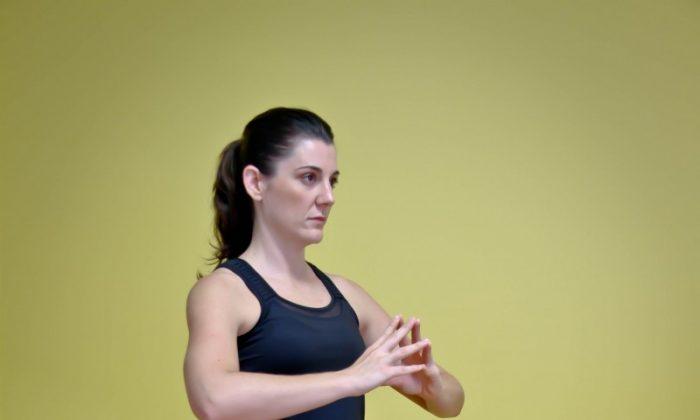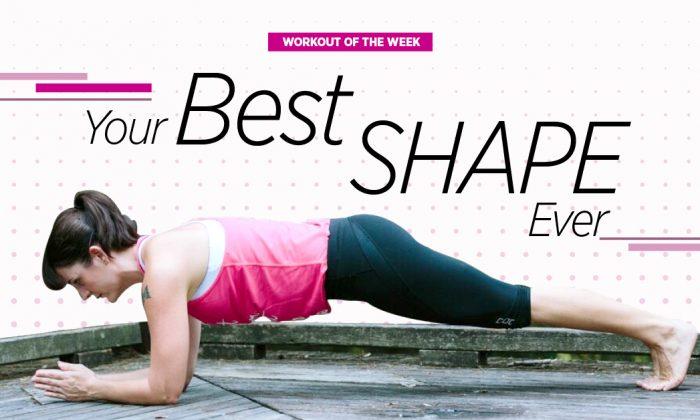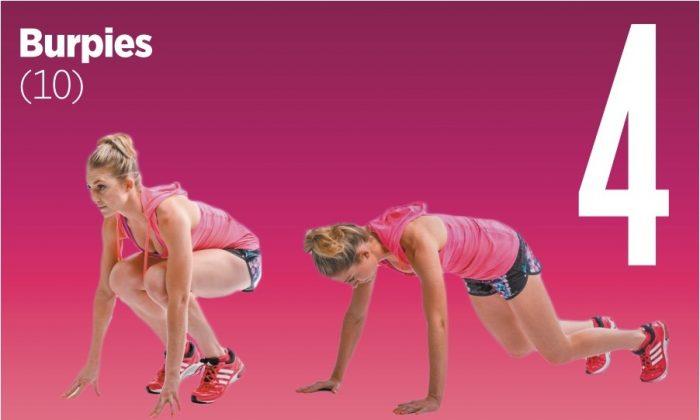As painful as lunges can be, they are an excellent all-around lower-body exercise—building stability and strength. The sooner you embrace them the better!
When performing a lunge, which is a compound exercise, you must use all of your leg muscles to move your ankle, knee, and hip joints. This is a much more efficient way to train the leg muscles than using isolated exercises, which only require the movement of one joint.
Both isolated and compound movements are effective, but usually compound exercises are classified as functional movements because they tend to mimic movements we perform in our daily lives. For example, we often perform a lunge or squat-type movement when we bend down to pick something up.
It is important to incorporate functional exercises into our exercise routine because they build the agility, stability, and strength we need to support our daily movement patterns.
Getting Started
- Stand with your feet hip-width apart.
- Step your right foot about 3 feet in front of your body in a diagonal direction.
- In this lunge position, lower your body toward the floor by bending your knees.
- Don’t allow your back knee to touch the floor.
- Lift back up by extending the knees. Step back into the starting position.
- Repeat 10 to 12 times on each leg.
- Repeat two to three sets.
Focus Points
Aim to keep your hips facing straight ahead, instead of turning on the diagonal with your front leg. This will be challenging at first.
Imagine you have a headlight on each hip, and the light needs to shine straight ahead throughout the exercise.
You will feel this exercise primarily in the back leg. You will feel a burn in the quad (the group of muscles at the front of your thigh). You will also feel a good muscular connection in the glute of the front leg.
Make sure you really push your front heel into the floor to get your glute to activate. If you don’t feel much around your glute, press you fingertips into it. This always helps recruit the muscles that should be working.
Between each set, hold a quad stretch. Stand tall, bring your right foot toward your buttocks, and hold the front of your foot with your hand. This will feel great after your lunges.
Emma-Kate Stampton certifies Pilates instructors and is a certified personal trainer. She is passionate about sharing the gift of health and well-being. She is based in Brisbane, Australia.






Friends Read Free